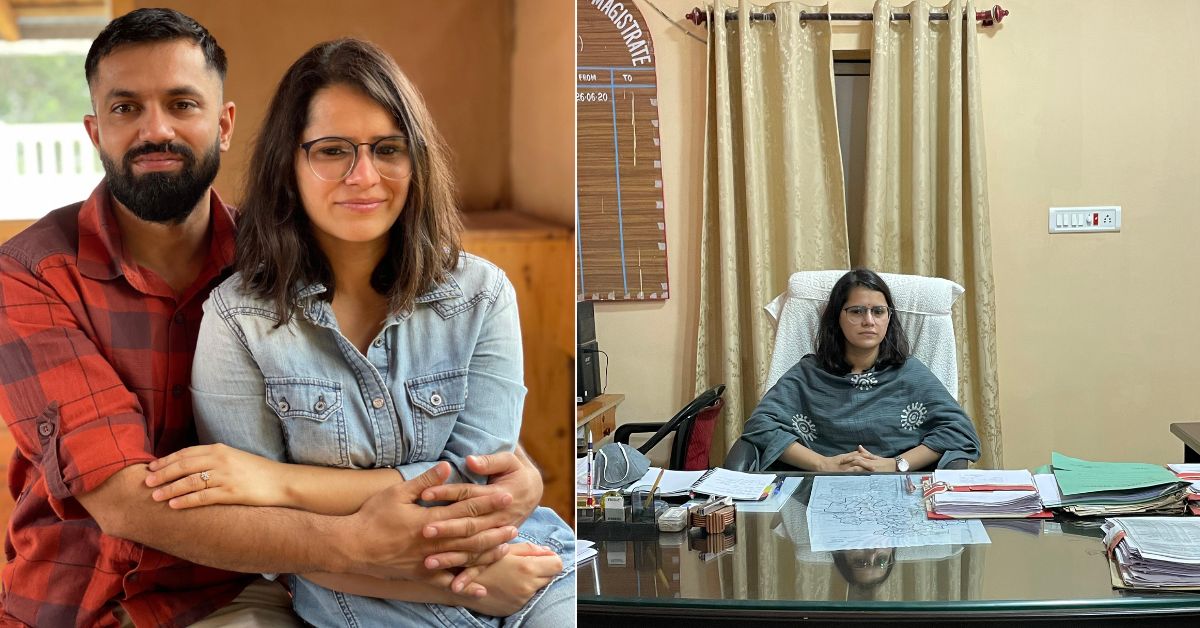Kajal Jawla attained her aim of becoming an IAS officer while working full-time in a corporate job and managing a new marriage. Her UPSC preparation journey demonstrates perfect time management, judicious leave usage, and dedicated study techniques.
When her peers called it a day and the city lights began to glimmer across Delhi’s horizon, Kajal Jawla’s day had only begun. She would clock out of her hard corporate job and get a cab home at eight p.m.

During the 1.5-hour drive, amidst the bustle of the city’s bustling pulse, Kajal would immerse herself in the day’s happenings, scanning current affairs. While most people would relax once they arrived home, her adventure had really just begun. Burning the midnight oil, she immersed herself in her literature to prepare for one of the most difficult exams—the Union Public Service Commission (UPSC).
Her hopes came true when she received an All-India Rank of 28 in the 2018 UPSC exams. Now an IAS officer, she describes her experience completing the exam while juggling professional duties, a new marriage, and a rigorous study regimen.
Balancing work, marriage, and study.
Kajal’s educational background is in electronics and communication engineering. Her career got off in the business sphere, where she spent nine years working for various global corporations in Gurugram.
This phase provided her with not just career stability, but also financial security, as she was committed to repaying an education loan. Kajal’s corporate work was more than simply a career; it was a lifeline that allowed her to sustain herself.

This phase provided her with not just career stability, but also financial security, as she was committed to repaying an education loan. Kajal’s corporate work was more than simply a career; it was a lifeline that allowed her to support herself as she pursued her dream of becoming an IAS officer.
Her UPSC preparations began in 2012, at the age of 24. Her first attempt, as well as following attempts in 2014 and 2016, were unsuccessful. During this time, Kajal switched employment and took the crucial step of getting married.
Marriage was a watershed moment in Kajal’s life. In 2017, during a talk with her spouse, she disclosed her previous attempts and remaining ambition. Kajal wished to make one last, full-throttle try without lingering on previous setbacks. A year later, she passed the exam with flying colors.
Drawing on her own experience, she gaves
useful advice on how to effectively prepare for the UPSC exam while working full-time.
- Configuring numerous alarms and time management
The most important aspect of Kajal’s success was her exceptional time management. She took advantage of every opportunity to study, starting with her commute. During travel, she would read newspapers, take daily quizzes on current events, and keep track of what was going on around her. This careful use of time guaranteed that her weekdays, while busy, were still beneficial for UPSC preparation.
Weekends were her time to focus on her studies. With her spouse frequently working on Saturdays, Kajal had the entire day to herself, focusing completely on her studies. “I would reserve my Sundays to catch up on anything I couldn’t complete during the week,” she reflects.
- Strategic leave usage
Kajal would reserve her annual leave to take only before exams. She took a week off before the prelims. After passing the first stage, she attempted to prepare for the’mains’ while continuing with her employment. She deliberately took a 45-day hiatus before the Mains exam to concentrate exclusively on her preparation.
During this time, she focused on intensive study and revision, taking a week off before her UPSC personality test. Her prior experience with workplace interviews helped her communicate effectively and confidently, allowing her to distill complex topics into concise thoughts and prepare for any questions.
Rewrite responses till they’re perfect.
Kajal found joining online study groups quite beneficial. These sites supplied daily practice questions, enabling her to compare her answers to those of other candidates, and helped her improve her technique.
Writing in bullet points, using flow charts, and employing illustrations were game changers for Kajal. Instead of lengthy paragraphs, these techniques enabled her to communicate information clearly and efficiently, making her responses easier to read and comprehend.
- Source Optimisation
Kajal emphasises the necessity of source optimisation. “I would rely on The Hindu for current news and free content from a few online coaching schools. I used NCERTs for Geography and books by Bipin Chandra, RS Sharma, and Tamil Nadu editions for History. I read Ramesh Singh’s book on the Indian economy. “I kept revising the same content several times,” she explains.



